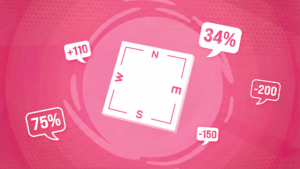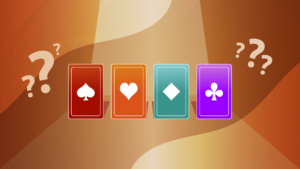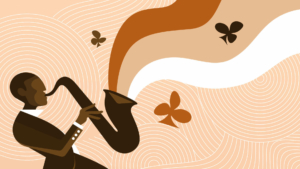
The truth about the subject of third suit forcing

Even if it is less complex than fourth suit forcing, the third suit forcing doesn’t conceal less traps in which many bridge players, even experienced ones, get caught when they are not attentive enough. Alain Lévy, super specialist on this topic, asks you to disentangle the true from the false in sometimes delicate situations.
Summary
Definition of third suit forcing – true or false?
1. Definition of third suit forcing – true or false?
- There are only three possible sequences for a third suit forcing.
- Third suit forcing can be made with 9HCP upwards.
- Third suit forcing promises a stopper in the named suit.
- Third suit forcing is auto-forcing.
- Third suit forcing elongates responder’s major.
- The sequence 1♣️-1♠️-2♣️-2♦️ can hide four cards in Hearts.
- There is no third suit forcing after 1♦️-1♥️-2♦️.
Solutions
1. There are only three possible sequences for a third suit forcing. – TRUE
Third suit forcing only exists after a repetition (without jump) of opener’s minor and is made by bidding the (unbid) suit that is the immediate next step:



The next three sequences use a third suit that is outside the box that defines a third suit forcing:



Without going into detail (this is not the topic of the day), these third suits have a tendency of being natural:
- 2♠️ shows four Hearts and four Spades, game forcing.
- 2♥️ shows five Spades and four Hearts, forcing one round but not game forcing.
- There are different opinions about 3♣️. Game forcing for all, but for some it has a tendency of being a two-suited hand with five Spades and at least three Clubs, for others it shows a Club stopper with exactly four Spades.
2. Third suit forcing can be made with 9HCP upwards. – TRUE
Opener’s range is 11-16HCP. Responder can be in the range for game from 9HCP on; his distribution may encourage him to bid again.

Game in Spades is possible, the No-trump game is certainly farther away.
3. Third suit forcing promises a stopper in the named suit. – FALSE
Third suit forcing is an artificial bid that promises neither a stopper nor even a certain length. It is merely a relay to learn more about opener’s strength and distribution.

4. Third suit forcing is auto-forcing. – FALSE
If both players are minimum, their total is not more than 20HCP and it is necessary to stop quickly. Responder can pass over any bid by opener that limits his hand to the 11-13HCP range. This is the essential difference between a third suit forcing and a fourth suit forcing.


5. Third suit forcing elongates responder’s major. – FALSE
It’s possible that all responder is looking for are stoppers to play 3 No-Trump. He can still have only four cards in his major, but also five or six.
♠️ K Q 9 6
♥️ A 10 7
♦️ K 10
♣️ J 9 4 3
♠️ K Q 9 6 2
♥️ A 10 7
♦️ K 10 3
♣️ J 9
♠️ K Q 9 7 6 2
♥️ A 10 7
♦️ K 10 3
♣️ J
The sequence is the same with these three hands:

6. The sequence 1♣️-1♠️-2♣️-2♦️ can hide four cards in Hearts. – FALSE
Like any conventional bid, third suit forcing is only used in the absence of a satisfactory natural bid. Over 2♣️, the natural 2♥️ bid is used under the same conditions as third suit forcing; the conventional 2♦️ bid therefore denies four Hearts.

7. There is no third suit forcing after 1♦️-1♥️-2♦️. – TRUE
To bid a new suit in this sequence (2♠️ or 3♣️), responder must go higher then to repeat his major. This would therefore be natural and show a strong two-suiter; auto-forcing and game forcing. To help you remember the difference, these two third suits are not “glued” to the 2♦️ bid.



2. Opener’s rebid – true or false?
You need a Funbridge Premium+ subscription to keep reading.
Please log in with a valid Premium+ account to read the full bridge lesson.



